A worldwide shift is taking place. Organizations are no longer assessed based only on traditional metrics such as financial performance, or even the quality of their products or services. Rather, organizations today are increasingly judged on the basis of their relationships with their workers, their customers, and their communities, as well as their impact on society at large — transforming them from business enterprises into social enterprises.
This fundamental transformation has been driven by social, political and economic changes that have grown since the global financial crisis, which has left people feeling frustrated. They now look beyond politics towards business leaders to fill this gap. Foundational to behaving as a social enterprise is to listen carefully to the external as well as the internal environment — not just business partners and customers, but all parties in society that an organization influences and is influenced by.
The aim of Executive Search Partners must, therefore, be to accompany and support organizations in reviewing their hiring focus and helping key-decisionmakers reach out towards candidates that understand where their business is heading – now with an increased focus on their respective social environments.
Deloitte published its “Global Human Capital Trends, 2018” report, which showcases this profound shift facing business leaders worldwide. It documents in detail how this development unfolded, where business reality still lags behind and how successful businesses are responding to these challenges. The report gives a very good background and added value to discussions with customers.
The report delves into the how’s of becoming a successful social enterprise and investing in both its own workforce and in the workforce eco-system as a whole, which in turn benefits both the organization and society at large. The 10 most important human capital trends are explored in this report and create an integrated view of the social enterprise.
A very useful aspect is the outline of a set of actions that C-suite leaders (including chief human resources officer – CHRO’s) can specifically consider, related to each trend. Each area of focus requires strong collaboration amongst leaders both across the organization and outside of it. The recommendations listed may prove very helpful indeed in your own discussions with customers/business leaders.
The trends are ranked according to perceived importance facing organisations today. Most participants in the survey agree however that most organisations are not yet ready to meet the expectations. Below is a brief summary of each trend that contributes to a successful rise of a social enterprise:
1.
The symphonic C-suite: Teams leading teams
This section highlights the urgent need for senior business leaders to get out of their silos and work with each other more. In order to navigate today’s constantly changing business environment and address cross-disciplinary challenges, a company’s top leaders must act as one. Deloitte calls this new, collaborative, team-based senior executive model “the symphonic C-suite”, i.e. a symphony of specialized experts playing in harmony.
2.
The workforce ecosystem: Managing beyond the enterprise
Organisations need to align their culture and management practices with external talent segments. A balanced workforce ecosystem needs to reflect a marked employment increase in the segment of freelancers, contractors and gig workers.
3.
New rewards: Personalized, agile and holistic
Companies need to create effective, personalized, flexible reward programs which reflect fairness and open pay.
4.
From careers to experiences: New pathways
With technology shifting the skills landscape, it is essential to attract critical talent and shifting from a steady progression along a job-based pathway towards a model that empowers individuals to acquire valuable experiences, explore new roles and continually reinvent themselves.
5.
The longevity dividend: Work in an era of 100-year lives
Staying competitive in a world of unprecedented longevity demands that organizations adopt new strategies to engage with older talent. Traditional assumptions – that learning ends in one’s 20s, career progression ends in the 40s, and work ends in the 60s – are no longer accurate or sustainable. Rethinking workforce strategies across multiple generations to account for longer lives will require open minds and fresh approaches.
6.
Citizenship and social impact: Society holds the mirror
In the era of the social enterprise, stakeholders are taking an intense look at organizations’ impact on society, whether it is how well a product meets people’s needs, how a manufacturing plant affects the social good of the community, or how employees feel about their jobs. This mirror – held up to businesses by society – reflects an organization’s identity for all to see, and burnishing that reflection is now vital for success.
7.
Well-being: A strategy and a responsibility
Driven by the always-on nature of digital business and 24/7 working styles, studies now show that more than 40 per cent of all workers faces high stress in their jobs, negatively affecting their productivity, health, and family stability. Well-being is becoming a core responsibility of good corporate citizenship and a critical performance strategy to drive employee engagement, organizational energy, and productivity. It is also a growing expectation among the talent companies most want to recruit, access, and retain. No longer an optional or narrowly focused element of the rewards menu, well-being is now front and centre as a business imperative for leading, high-performance companies.
8.
AI, Robotics, and automation: Put humans in the loop
The greatest opportunity is not just to redesign jobs or automate routine work, but to fundamentally rethink 'work architecture' to benefit organizations, teams, and individuals. Leading organizations are working hard to put HUMANS in the loop – rethinking work architecture, retraining people, and rearranging the organization to leverage technology to transform business. The broader aim is not just to eliminate routine tasks and cut costs, but to create value for customers and meaningful work for people. With the adoption of new automation technologies, workers will need ongoing development and reskilling, with an emphasis on essential human skills such as critical thinking and problem-solving.
9.
The hyper-connected workplace: Will productivity reign?
Companies are concerned about a potential disconnect between new communications tools and organizational goals. To help ensure that personal connectivity translates to organizational productivity, they are adapting their practices, workspaces, and leadership styles to capitalize on the power of these tools while mitigating potential negative impacts. There is a rising need to create a deliberate strategy for using collaboration and communication platforms that extend beyond technology alone. This could involve adjustments to the physical workspace, different management techniques, and/or rewards or incentives to shape the way people use the available tools.
10.
People data: How far is too far?
The domain of people analytics is growing rapidly, offering new opportunities to better hire, manage, retain, and optimize the workforce. As organizations collect more personal and business data about their employees, however, they raise growing risks and ethical questions about data security, transparency, and the need to ask permission. Organizations now need robust security safeguards, transparency measures, and clear communication around their people data efforts — or they could trigger employee privacy concerns and backlash over data abuse.
The 2018 Global Human Capital Trends report provides a wake-up call for organizations and an opportunity for discussion. The role of search consultants might very well expand into considerations of how potential candidates need to be attracted to the organisation presenting itself as a successful social enterprise.



